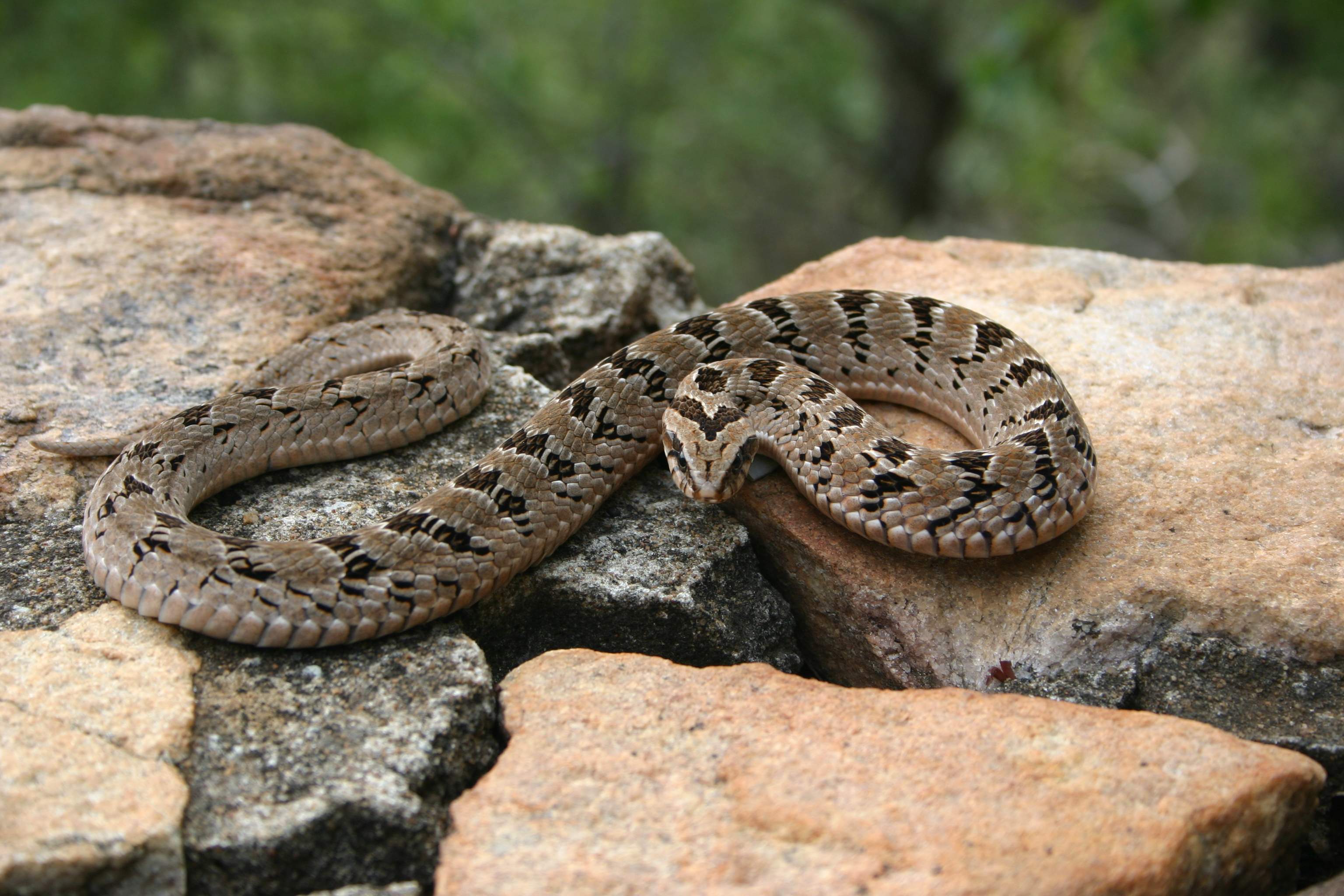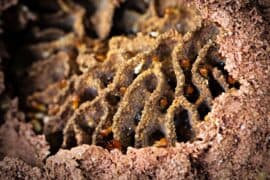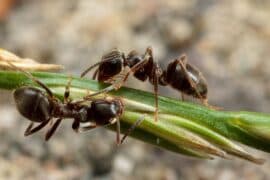Lichtenstein's night adder
(Causus lichtensteinii)

Description
Causus lichtensteinii is a venomous viper species endemic to western, central, and eastern Africa. There are no subspecies that are recognized as being valid. Adults of C. lichtensteinii average 30–55 cm (12–22 in) in length with a reported maximum of 70 cm (28 in). The head is not very wide, and the snout is blunt. The eye is surrounded by a circumorbital ring of 5–7 scales. There are 6 supralabials and 9 sublabials. The temporals number 2+3 or sometimes 2+2, with the first and second upper temporals being as long together as the first lower one. Loreals: 1+1. Midbody there are 15 rows of weakly keeled dorsal scales that have a velvety texture. The anal scale is single. There are 128–152 ventral scales. The subcaudals number 18–22 in males and 17–19 in females. The color pattern consists of a greenish or olive ground color overlaid with a series of dark narrow backward pointing chevrons running down the back. This pattern may be vague or developed fully into rhombic markings. The back of the neck has a characteristic white V-shape while the throat is black with yellow bands. Juvenile specimens are generally dark brown in color. As opposed to other members of its genus, C. lichtensteinii is mostly found in pristine rain forests with little light filtering down to the forest floor. It tends to be found near water in swampy areas. In the Atewa Range Forest Reserve in Ghana it has been found at altitudes of up to 670 m (2,200 ft). The specific name, or epithet, lichtensteinii, honors German herpetologist Martin Hinrich Lichtenstein. Common names for C. lichtensteinii include Lichtenstein's night adder, forest night adder, and olive-green viper. Causus lichtensteinii is diurnal and mostly terrestrial. However, it is a good swimmer and has even colonized certain islands in Lake Victoria. When disturbed it puts on a hissing and puffing threat display similar to other members of the genus. Causus is a genus of venomous vipers found only in sub-Saharan Africa. It is a group considered to be among the most primitive members of the family Viperidae based on head scalation, oviparity, venom apparatus, and because they have round pupils. However, this is contradicted by recent molecular studies. Seven species are currently recognized. They are commonly known as night adders.
Taxonomic tree:







